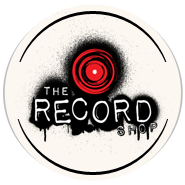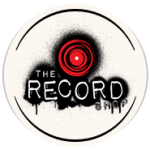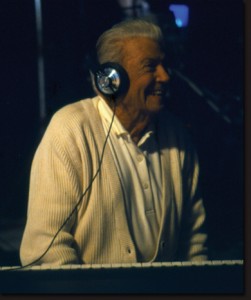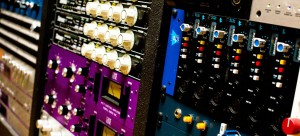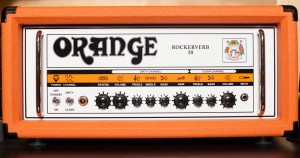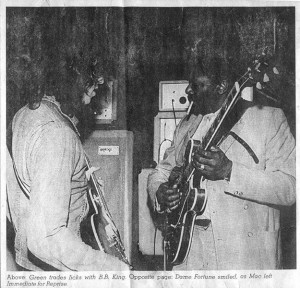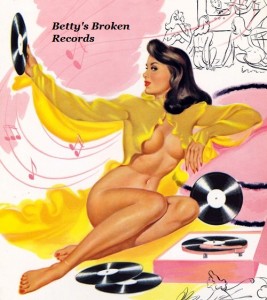 Hey y’all! Music City is one of the greatest hubs of creativity in the World, not just for the music for which the city gained its nickname from but for artists of every cree. The Record Shop is very excited to get to share some of the great local talent that Nashville has to offer. We had the privilege of chatting with Cari Gray, a local artist who specializes in hand-carved, vinyl record sculptures. A native of Tallahassee, Florida, Cari moved to Nashville back in 2005 to complete her degree in the Music Business from MTSU, and currently works at Sony Music Nashville. The Record Shop first met Cari a few weeks ago at the Tomato Art Festival in East Nashville. Our Master in Chief, Sean Giovanni, saw a piece Cari had carved in the shape of his home state Michigan that now proudly hangs in the confines of our Nashville Recording Studio.
Hey y’all! Music City is one of the greatest hubs of creativity in the World, not just for the music for which the city gained its nickname from but for artists of every cree. The Record Shop is very excited to get to share some of the great local talent that Nashville has to offer. We had the privilege of chatting with Cari Gray, a local artist who specializes in hand-carved, vinyl record sculptures. A native of Tallahassee, Florida, Cari moved to Nashville back in 2005 to complete her degree in the Music Business from MTSU, and currently works at Sony Music Nashville. The Record Shop first met Cari a few weeks ago at the Tomato Art Festival in East Nashville. Our Master in Chief, Sean Giovanni, saw a piece Cari had carved in the shape of his home state Michigan that now proudly hangs in the confines of our Nashville Recording Studio.
The Record Shop: How long have you been an artist? What got you started?
Cari Gray: I have always been pretty creative and crafty and I would rather be doing something productive than watching tv or reading a book. Unless it’s shark week. Then all bets are off. I just started cutting records this past December; I’ve made record bowls and bracelets out of vinyl in the past but never just cut one up. 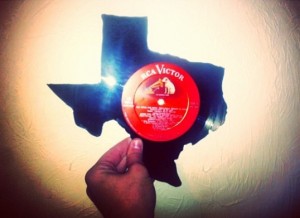 I made the state of Texas for a girl at work and it turned out pretty good. She put it up at her desk and before I knew it 10 other co-workers wanted their home states cut. Tomatofest was the first time I displayed my records and it was a blast and was super successful. It’s nice being appreciated for your work, especially when you just fall into it like I did.
I made the state of Texas for a girl at work and it turned out pretty good. She put it up at her desk and before I knew it 10 other co-workers wanted their home states cut. Tomatofest was the first time I displayed my records and it was a blast and was super successful. It’s nice being appreciated for your work, especially when you just fall into it like I did.
RS: Who are some of your biggest inspirations?
CG: I like all kinds of art and there are so many talented people in Nashville. But I don’t know anyone who hand cuts records like I do. I’ve heard of people laser cutting records because people always ask me if I do, but every record is different because they are hand cut. And, I honestly wouldn’t know what to do with a laser anyhow.
RS: Do you spare certain, special records from becoming pieces, or are they all fair game?
CG: Everything is fair game. I try to match the state with the artist or a track on the record as best as I can. For instance, if I cut a Texas record I would try to find an artist from there like Willie Nelson.
RS: Do you remember the first record you carved?
CG: I don’t remember which artist was on the first record I cut. I know it was an RCA Victor record though, and we work for RCA. So, that’s why I chose that one.
RS: How do you decide on what to carve out of a record?
 CG: I like to cut states out of the records because I feel like most people that I’ve met here aren’t from Nashville so people like to represent their home state. I know I do. But, that’s the great thing about Nashville. Artists come from all over for music and whatever else. I was a 20 year old once who moved up here to be a singer too, like a lot of other people.
CG: I like to cut states out of the records because I feel like most people that I’ve met here aren’t from Nashville so people like to represent their home state. I know I do. But, that’s the great thing about Nashville. Artists come from all over for music and whatever else. I was a 20 year old once who moved up here to be a singer too, like a lot of other people.
I also like to cut out random silhouettes, animals, and musical artists. I love Michael Jackson so I’ve cut a few out of him. I honestly just cut out whatever I like. It could be a unicorn if that’s the way I’m feeling that day. I just google whatever I want and try to find an outline for it, and if I can’t Find what I want I just free hand draw it.
RS: What records have you playing, instead of carving?
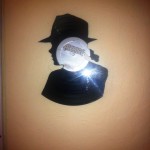 CG: I listen to all kinds of music, literally. I work in country music, but my husband [Jeff Shields] is the lead singer of two rock bands (Stereoside and Stone Glory) so I listen to his stuff a lot also. So if I finish something cool, I go in the music room to make sure he thinks it’s just as cool because I am so new at this whole record cutting thing. Then I return to the craft room with my safety glasses covered in vinyl dust. So it works out pretty well. I have a good collection of vinyl, mostly rock n’ roll, Sam Cooke and Michael Jackson. Lately, I’ve been listening to The Wild Feathers and a lot of other local bands. We are so spoiled here in nashville.
CG: I listen to all kinds of music, literally. I work in country music, but my husband [Jeff Shields] is the lead singer of two rock bands (Stereoside and Stone Glory) so I listen to his stuff a lot also. So if I finish something cool, I go in the music room to make sure he thinks it’s just as cool because I am so new at this whole record cutting thing. Then I return to the craft room with my safety glasses covered in vinyl dust. So it works out pretty well. I have a good collection of vinyl, mostly rock n’ roll, Sam Cooke and Michael Jackson. Lately, I’ve been listening to The Wild Feathers and a lot of other local bands. We are so spoiled here in nashville.
Spoiled indeed. Nashville is a truly remarkable town full of incredibly talented artists like Carilyn Gray. If you like Cari’s work as much as we do, and how could you not, you can click HERE to go to her website where you can view and purchase her work!
Thank you for spending some time with us here in The Record Shop! Be sure to follow and chat with us on Twitter, @therecordshop, for daily updates from Gio & the Henchmen. We’ll see you next time!
